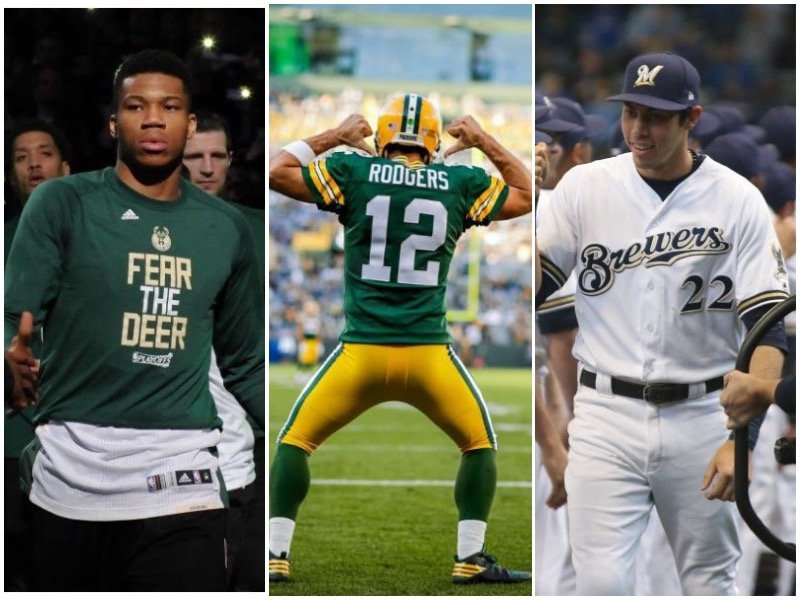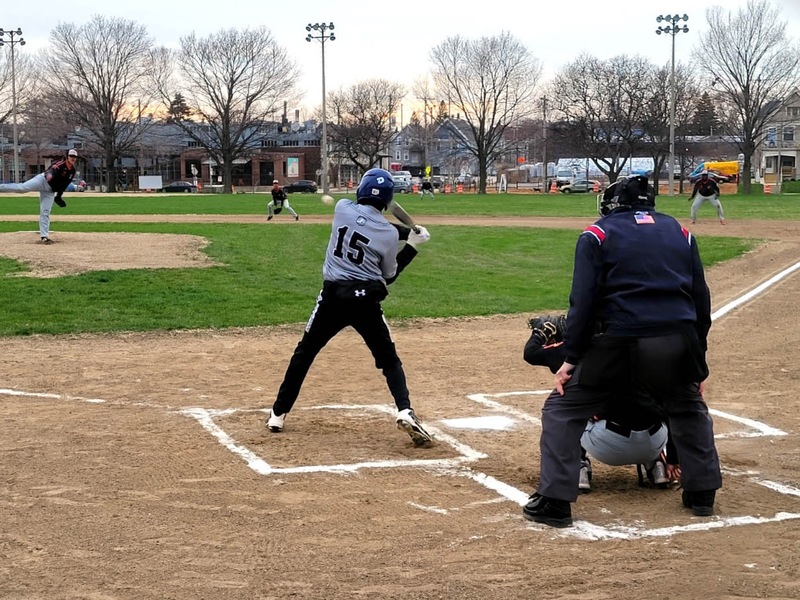We are now in the player empowerment era of sports. Want proof? Just take a quick look across the biggest leagues in the country.
In the NFL, running back Le’Veon Bell passed on over $14.5M with the Pittsburgh Steelers this year in the hopes of a more lucrative, long-term contract. This summer, Golden State Warriors forward Kevin Durant will be working through his fourth straight offseason as a de facto free agent following the short-term, player option contract strategy first popularized by LeBron James in his second Cleveland tenure. Baseball stars Bryce Harper and Manny Machado figure to wait deep into 2019 as they search for record-shattering deals.
These sports leagues are making more money than ever, and the players are hunting for their slice of the pie, as they should. And while it’s totally fair – and should be expected – for players to look for the biggest contracts possible, it’s also fair for teams and their fans to pursue below-market deals. In the NBA and the NFL – and to some extent in the MLB, as well – more money for one player means there is less available to build the rest of the team. It’s wonderful that Washington Wizards point guard John Wall will be averaging $42M annually through the 2022-23 season, but Wiz fans don’t root for Wall’s bank account. They root for the team, and Wall’s exorbitant salary makes it almost impossible to create a contending roster around him.
However, there are plenty of favorable deals dotting the cap sheets of the three Wisconsin pro teams, allowing these local organizations to create more depth around its top-tier players. Here are the nine most team-friendly contracts in Wisconsin sports (not including rookie-scale contracts).
All contract information via Spotrac.
Bargain bin contracts
9. Brook Lopez (one year, $3.3M contract)
- 2018-19: $3.3M
Lopez – along with new head coach Mike Budenholzer – is the key to the new-look Bucks in 2018-19. The seven-footer is launching nearly seven treys per night (and converting on 35 percent of them) and doing the dirty work on the boards (his 8.2 box outs per game ranks eighth in the NBA). Lopez’ plus-11.8 net rating is the best mark of any center this year and is fifth among all players tallying at least 15 minutes per game. Whether Lopez is back in Milwaukee in 2019-20 or bounces to his fourth team in four years, he is certain to pick up a contract far-exceeding his current deal.
8. Jeremy Jeffress (one year, $1.75M contract with two club options)
- 2019: $3.1M (club option exercised)
- 2020: $4.3M (club option)
Jeffress inked a one-year deal with a pair of options prior to the 2018 campaign, and even after his postseason struggles, the Brewers will be very happy to pay a high-leverage reliever for less than $8M combined over the next two years. Joe Kelly – who just signed a three-year, $25M deal with the Dodgers and is roughly the same age as Jeffress – will make over $8M in both 2020 and 2021, despite posting a 4.39 ERA last year. Kelly did dominate throughout the playoffs, and both pitchers will likely perform closer to their career stat lines in 2019, but the Brewers are still getting the more consistent pitcher at a fraction of the cost.
Under-priced key cogs
7. Jhoulys Chacin (two years, $15.5M contract)
- 2019: $6M
The Chacin signing earned no headlines last winter, but the veteran right-hander still responded with his best season since 2013. Down the stretch and into the playoffs, Chacin was dominant for the Brewers in the biggest moments, posting a 1.57 ERA with just 11 hits allowed over his final five starts. Fangraphs estimates that one win above replacement (WAR) is worth roughly $11M. If Chacin were to replicate his 2.6 WAR campaign in 2019 (so 5.2 WAR total), his two-year contract should have been worth over $50M. Of course, contracts never match up exactly with their WAR estimates, but general manager David Stearns still landed a massive steal last offseason.
6. Khris Middleton (five years, $70M contract)
- 2018-19: $13M
- 2019-20: $13M (player option)
Middleton is almost certainly going to opt out of the final year of his contract, but he is still providing high-end value (borderline All-Star talent) for the price of Miles Plumlee this year. The 27-year-old will be sought after this offseason as a versatile secondary playmaker and is likely to receive a nine-figure deal.
5. David Bakhtiari (four years, $48M contract)
- 2019: $14.2M
- 2020: $14.2M
Bakhtiari’s average annual salary ($12M) on his four-year deal is tied for eighth among his position mates, which is a severely discounted rate for the best left tackle in the NFL (per Pro Football Focus). Even though his cap hit ticks upwards slightly over the next two seasons, it is still more than a fair price for Aaron Rodgers’ blind side protector, especially as the price for competent offensive line play continues to rise.
4. Davante Adams (four years, $58M contract)
- 2019: $10.8M
- 2020: $16.6M
- 2021: $16.6M
Since the start of 2016, Adams and Antonio Brown are the only players to surpass 250 catches, 3,000 receiving yards and 30 touchdowns, yet other receivers beneath their levels of production continue to sign record-breaking deals each offseason. By the time Adams is 28 years old in the final year of his current deal, his $16.6M cap hit will look very favorable compared to some of the other top receivers in the league, especially if he is still teaming up with Rodgers for back-shoulder receptions with regularity.
Star power signings
3. Aaron Rodgers (four years, $134M contract)
- 2019: $26.5M
- 2020: $32.6M
- 2021: $33.5M
- 2022: $37M
- 2023: $25.5M
Those are very large numbers, but when the going rate for decent QB play is around $25M per year (Kirk Cousins, Matthew Stafford, Derek Carr and Alex Smith all own price tags in the mid-20s), then Rodgers certainly deserves significantly more. And if Rodgers plays up to his expected performance level – something he failed to do in 2018 – than this deal will still work out for Green Bay.
With cap hits upwards of $32M on Rodgers’ contract from 2020-22, the Packers front office will have less wiggle room to shore up the rest of the roster with the type of talent befitting one of the greatest quarterbacks in history. Nailing bargain bin signings, waiver claims and draft picks will become even more crucial for Brian Gutekunst. Luckily, the Packers did put together a decent draft in Gutekunst’s first season, and they have two first-round picks coming their way in 2019: their own selection, which will be around no. 15, and the Saints’ pick, which will likely be in one of the final first-round slots.
Should the 35-year-old Rodgers fail to bounce back though, Green Bay does have an out prior to the contract’s most expensive season. Before Rodgers is owed $37M in 2022, the Packers can release him with "only" $11.5M remaining on the cap that year, and then hit the ground running with a clean slate in 2023. It very likely won’t come to that, as quarterbacks of Rodgers’ talents are few and far between, and the Packers should (and will) do everything to make sure he retires in the green and gold. However, it is an option should the offense fail to improve with a new head coach.
Green Bay could also take a page out of New Orleans’ book and restructure Rodgers’ deal down the road to pry open up some more year-to-year cap space, something the Saints have done in the past with Drew Brees.
2. Christian Yelich (seven years, $49.5M contract)
- 2019: $9.75M
- 2020: $12.5M
- 2021: $14M
- 2022: $15M (club option)
Ah yes – trading with the Miami Marlins. The gift that keeps on giving. Not only did the Brewers pick up an MVP for four prospects, they now have said MVP on a dirt-cheap contract through his age-30 season.
As I touched on in mid-September, Yelich is one of the game’s preeminent young stars. While Mike Trout laps the field in performance over the last five years (180 OPS+), Yelich (131) is sandwiched right between three other brand-name players entering their primes: Bryce Harper (144), Mookie Betts (134) and Manny Machado (127). Two of those players are primed for mega-contracts north of $300M in the coming months, while the other (Betts) could land a similar extension from Boston shortly afterward. Over the next four years, Milwaukee owes Yelich less than what Harper will earn over the next two seasons, even though Yelich’s 17.6 WAR dwarfs Harper’s 11.3 total since 2016. Thanks, Marlins!
1. Giannis Antetokounmpo (four years, $100M contract)
- 2018-19: $24.1M
- 2019-20: $25.8M
- 2020-21: $27.5M
In the NBA, the only thing better than building a team around a superstar is building a team around a superstar on a below-market contract. Antetokounmpo could have (and maybe should have) tacked on an extra year and additional cash to the extension he signed in 2016, but fortunately for the Bucks, he took less than the maximum salary available, something Milwaukee would have still been happy to give him.
Fellow 2013 draftees – Portland guard CJ McCollum, Washington forward Otto Porter, Utah center Rudy Gobert and Oklahoma City center Steven Adams – are all on relatively fair four-year deals also worth roughly $100M. No disrespect to those four players, but Antetokounmpo is in a completely different class and, by some metrics, has been the most impactful player in the league this season. Antetokounmpo’s favorable contract also allowed Milwaukee to surround its MVP with quality rotation players like Lopez and Pat Connaughton, who have been instrumental to the Bucks’ push towards the top of the league.







